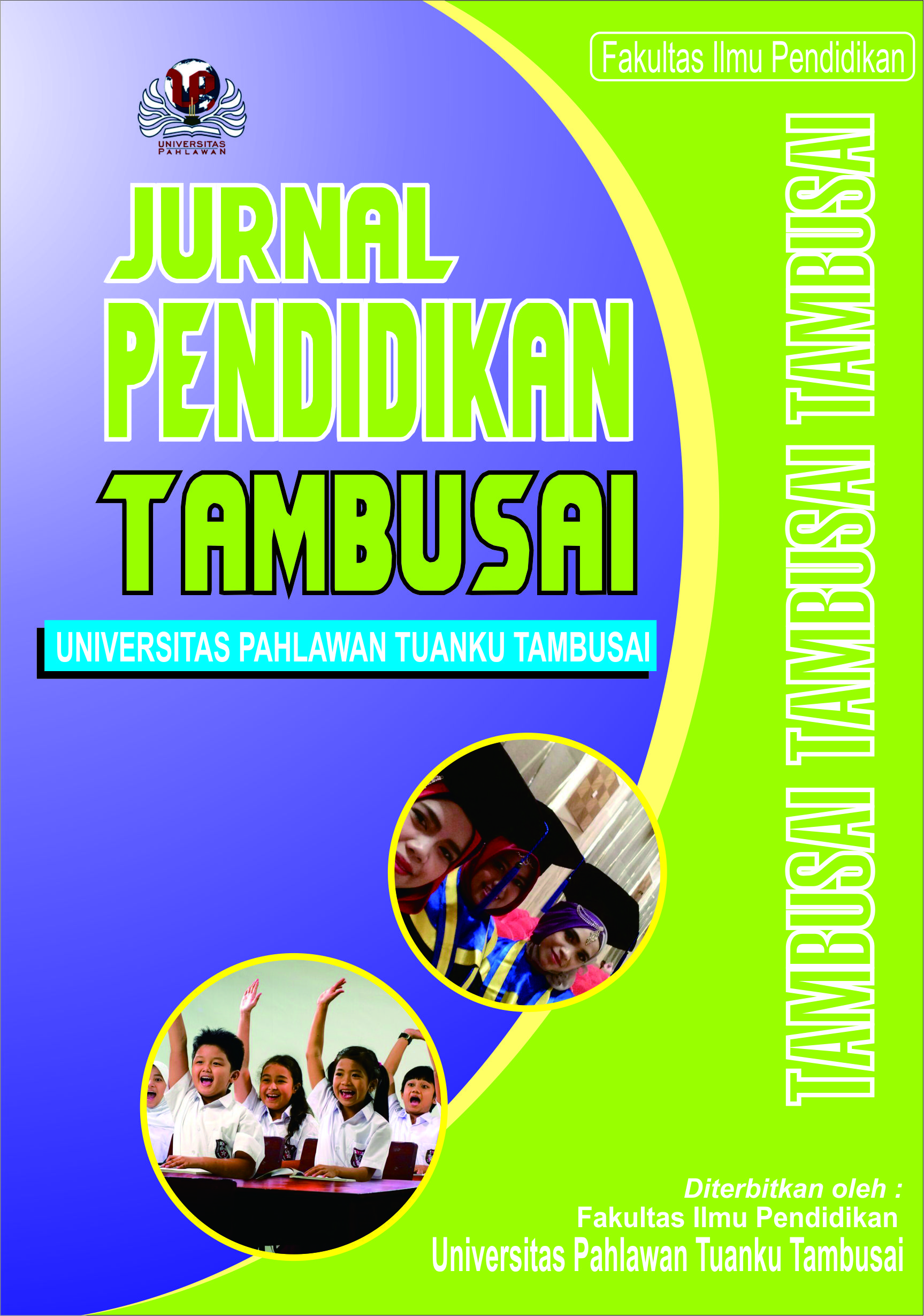Penerapan Computational Thinking melalui Aktifitas Unplugged dalam Materi Pengelolaan Sampah pada Pendidikan Anak Usia Dini
DOI:
https://doi.org/10.31004/jptam.v8i1.14509Keywords:
Computational Thinking, Aktifitas Unplugged, Pendidikan Anak Usia Dini, Pengelolaan SampahAbstract
References
Ajija, Shochrul Rohmatul, dkk. 2011. Cara Cerdas Menguasai Eviews. Jakarta: Salemba Empat.
Arikunto, Suharsimi. 2006. Prosedur Penelitian: Suatu Pendekatan Praktik. Jakarta: PT. Rineka Cipta
Beecher, K. (2017). Computational Thinking : A beginner's guide to problem-solving and programming. Swidon: BCS.
Bell, T., Alexander, J., Freeman, I., & Grimley, M. (2009). Computer science unplugged: School students doing real computing without computers. The New Zealand Journal of Applied Computing and Information Technology, 13(1), 20–29.
Bers, M.U, Gonzalez, C. G., & Torres, M. B. A. (2019). Computers & Education Coding as a playground : Promoting positive learning experiences in childhood classrooms. Computers & Education, 138 (3), 130–145. DOI: 10.1016/j. compedu.2019.04.013
Bers, M. U. (2018). Coding and Computational Thinking in Early Childhood : The Impact of Scratch Jr in Europe. European Journal of STEAM Education, 3 (3), 1-13. DOI:10.20897/ejsteme/3868
Blanco, P. J., Leiva, J. S., Feijoo, R. A., & Buscaglia, G. C. (2010). Black-box decomposition approach for computational hemodynamics: One-dimensional models. Computational Methods for Applied Mechanical Engineering, 1385–1405.
Budiansyah, A. (2020). Nadiem usung computational thinking jadi kurikulum, apa itu? Cnbindonesia. https://www.cnbindonesia.com. Diakses pada tanggal 11 november 2023
Cansu, F. K., & Cansu, S. K. (2019). An Overview of Computational Thinking. International Journal of Computer Science Education in Schools, 3(1), 17–30. https://doi.org/10.21585/ijcses.v3i1.53
Depdiknas. (2014). Peraturan Menteri Pendidikan dan Kebudayaan Republik Indonesia Nomor 137 Tahun 2014 Tentang Standar Nasional Pendidikan Anak Usia Dini. Jakarta: Depdikbud
Grover, S., & Pea, R. (2013). Computational thinking in K–12: A review of the state of the field. Educational researcher, 42(1), 38-43.
Ioannidou, A., Bennett, V., Repenning, A., Koh, H., & Basawapatna, A. (2011). Computational Thinking Patterns. 2011 Annual Meeting of the American Educational Research Association (AERA), 2, 15.
Lee, T. Y., Mauriello, M. L., Ahn, J., & Bederson, B. B. (2014). CTArcade: Computational thinking with games in school age children. International Journal of Child-Computer Interaction, 2(1), 26–33. https://doi.org/10.1016/j.ijcci.2014.06.003
Maharani, S., Nusantara, T., As’ari, A. R., & Qohar, Abd. (2020). Computational Thinking?: Media Pembelajaran CSK (CT-Sheet for Kids) dalam Matematika PAUD. Jurnal Obsesi?: Jurnal Pendidikan Anak Usia Dini, 5(1), 975–984. https://doi.org/10.31004/obsesi.v5i1.769
Mubarokah, H. R., Pambudi, D. S., Lestari, N. D. S., Kurniati, D., & Jatmiko, D. D. H. (2023). Kemampuan Berpikir Komputasi Siswa dalam Menyelesaikan Soal Numerasi Tipe AKM Materi Pola Bilangan. JNPM (Jurnal Nasional Pendidikan Matematika), 7(2), 343. https://doi.org/10.33603/jnpm.v7i2.8013
Nadhip, F. M., Pratiwi, L. N., & Suryani, A. (2022). Perbandingan rasio profitabilitas perusahaan sektor pertambangan yang terdaftar di BEI sebelum dan selama pandemi Covid-19. Indonesian Journal of Economics and Management, 2(3), 526-534.
Paul Suparno, Perkembangan Kognitif Jean Piaget, Yogyakarta: Kanisius, Cet I, 2006, hal.11
Rich, P. J., Egan, G., & Ellsworth, J. (2019). A framework for decomposition in computational thinking. Annual Conference on Innovation and Technology in Computer Science Education, ITiCSE, 416–421. https://doi.org/10.1145/3304221.3319793
Román-González, M., Pérez-González, J. C., & Jiménez-Fernández, C. (2017). Which cognitive abilities underlie computational thinking? Criterion validity of the Computational Thinking Test. Computers in Human Behavior, 72, 678–691. https://doi.org/10.1016/j.chb.2016.08.047
Salamanca Garay, I. J. & Badilla Quintana, M. G. (2021). From computational thinking to creative thinking. an analysis of their relationship in high school students. Icono 14, 19(2), 261-285.
Setiana, D. S., & Purwoko, R. Y. (2020). Analisis kemampuan berpikir kritis ditinjau dari gaya belajar matematika siswa. Jurnal Riset Pendidikan Matematika, 7(2), 163–177. https://doi.org/10.21831/jrpm.v7i2.34290
Sugiyono. (2013). Metode Penelitian Kuantitatif, Kualitatif Dan R &. Dkuantitatif (19 Ed.). Alfabeta, Cv.
Tsara,Katherina,Moeller K, Ninous,M.(2021). A cognitive definition of computational thinking in primary education. Computer & Education Journal.Elsevier. https://doi.org/10.1016/j.compedu.2021.104425
Wing, J. M. (2006). Computational thinking. Communications of The ACM, 49(3), 33–35. https://doi.org/10.1145/1118178.1118215
Wing, J. M. (2008). Computational thinking and thinking about computing. Philosophical Transactions of the Royal Society A: Mathematical, Physical and Engineering Sciences, 366(1881), 3717–3725. https://doi.org/10.1098/rsta.2008.0118
Yadav, A., & Berges, M. (2019). Computer science pedagogical content knowledge: Characterizing teacher performance. ACM Transactions on Computing Education, 19(3), 1–24Lambungmangkurat, 9-11Agustus
Downloads
Published
How to Cite
Issue
Section
Citation Check
License
Copyright (c) 2024 Elisa Rosa

This work is licensed under a Creative Commons Attribution-ShareAlike 4.0 International License.
Authors who publish with this journal agree to the following terms:
- Authors retain copyright and grant the journal right of first publication with the work simultaneously licensed under a Creative Commons Attribution License that allows others to share the work with an acknowledgement of the work’s authorship and initial publication in this journal.
- Authors are able to enter into separate, additional contractual arrangements for the non-exclusive distribution of the journal’s published version of the work (e.g., post it to an institutional repository or publish it in a book), with an acknowledgement of its initial publication in this journal.
- Authors are permitted and encouraged to post their work online (e.g., in institutional repositories or on their website) prior to and during the submission process, as it can lead to productive exchanges, as well as earlier and greater citation of published work (See The Effect of Open Access).



